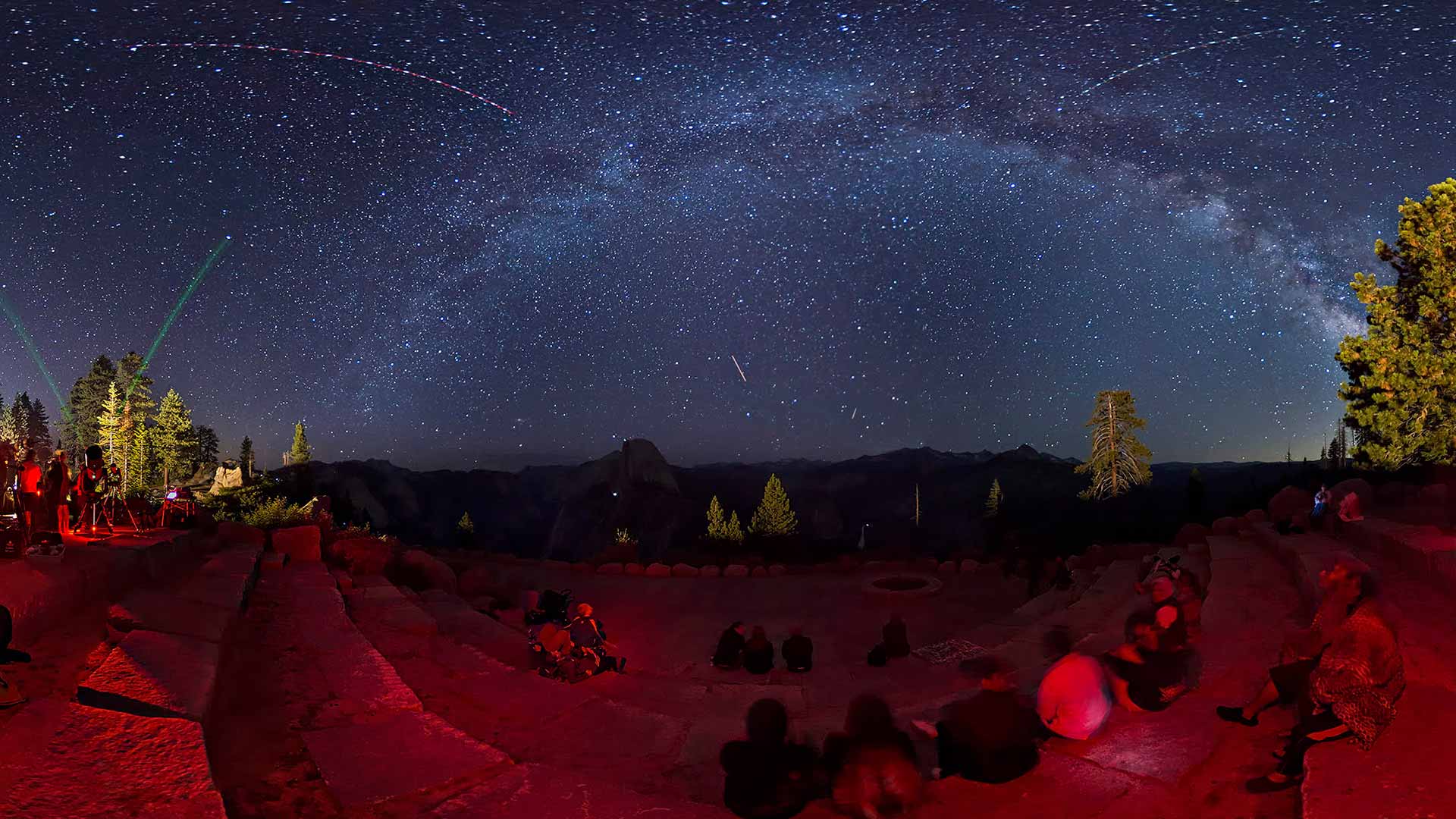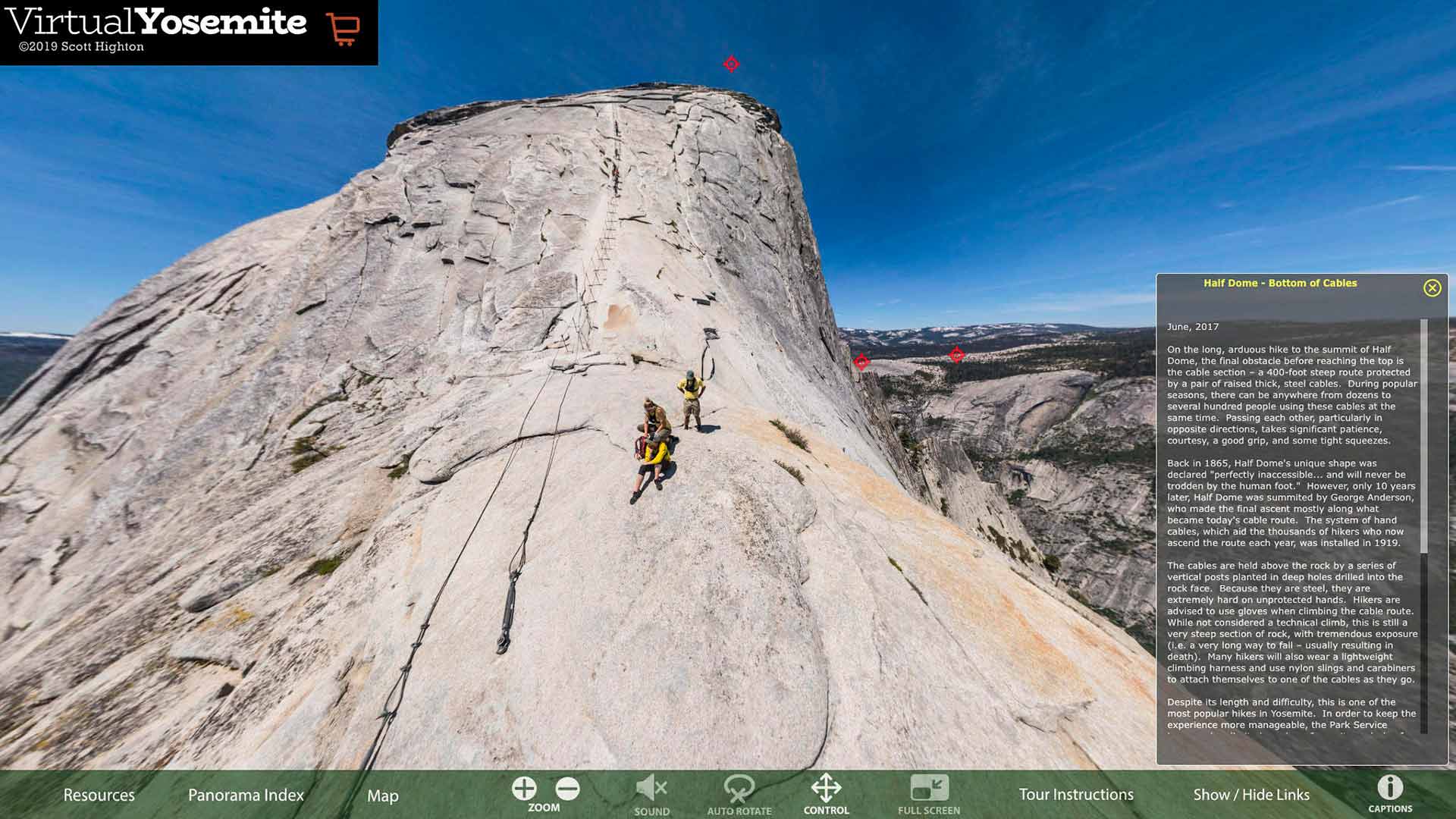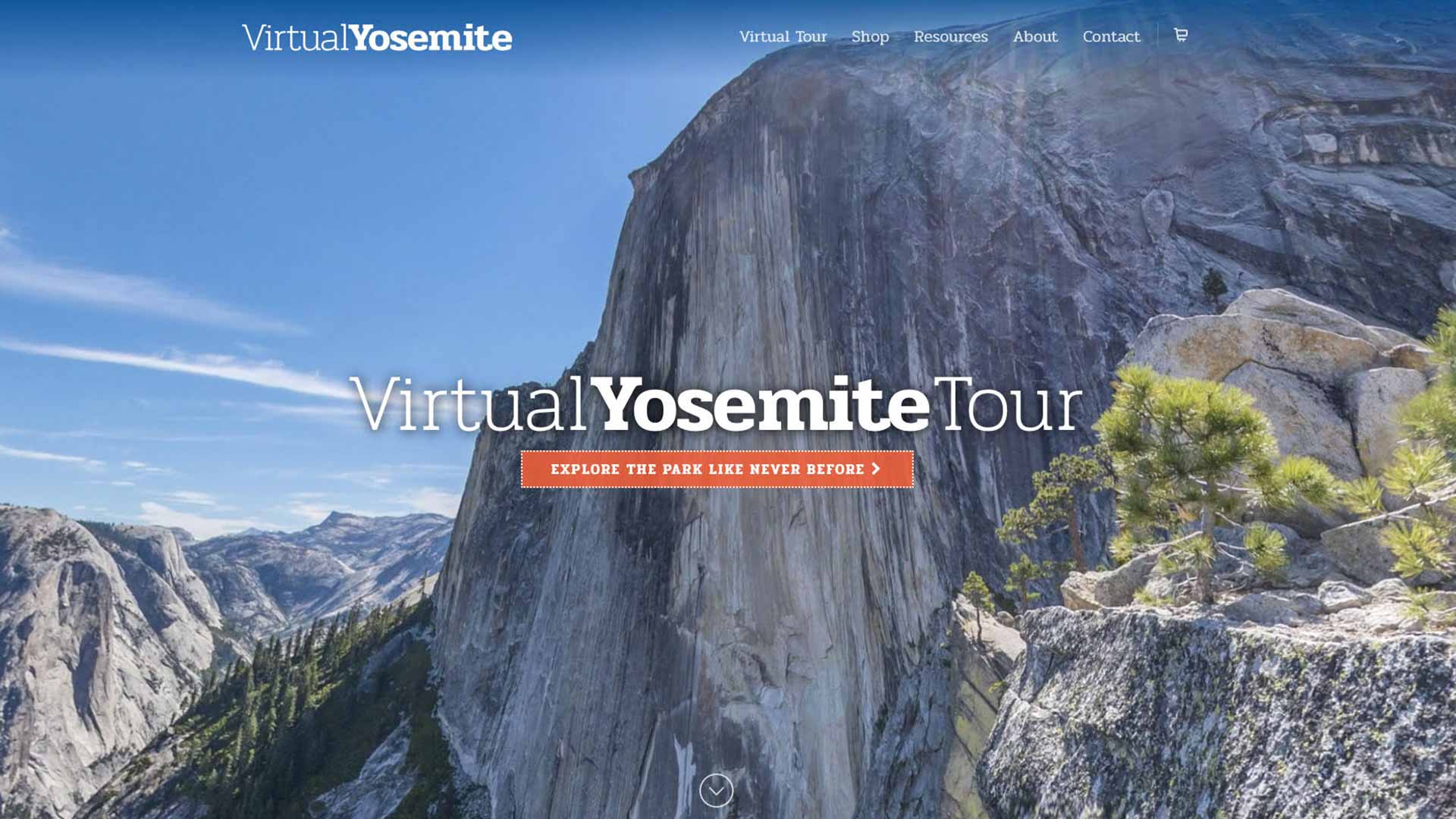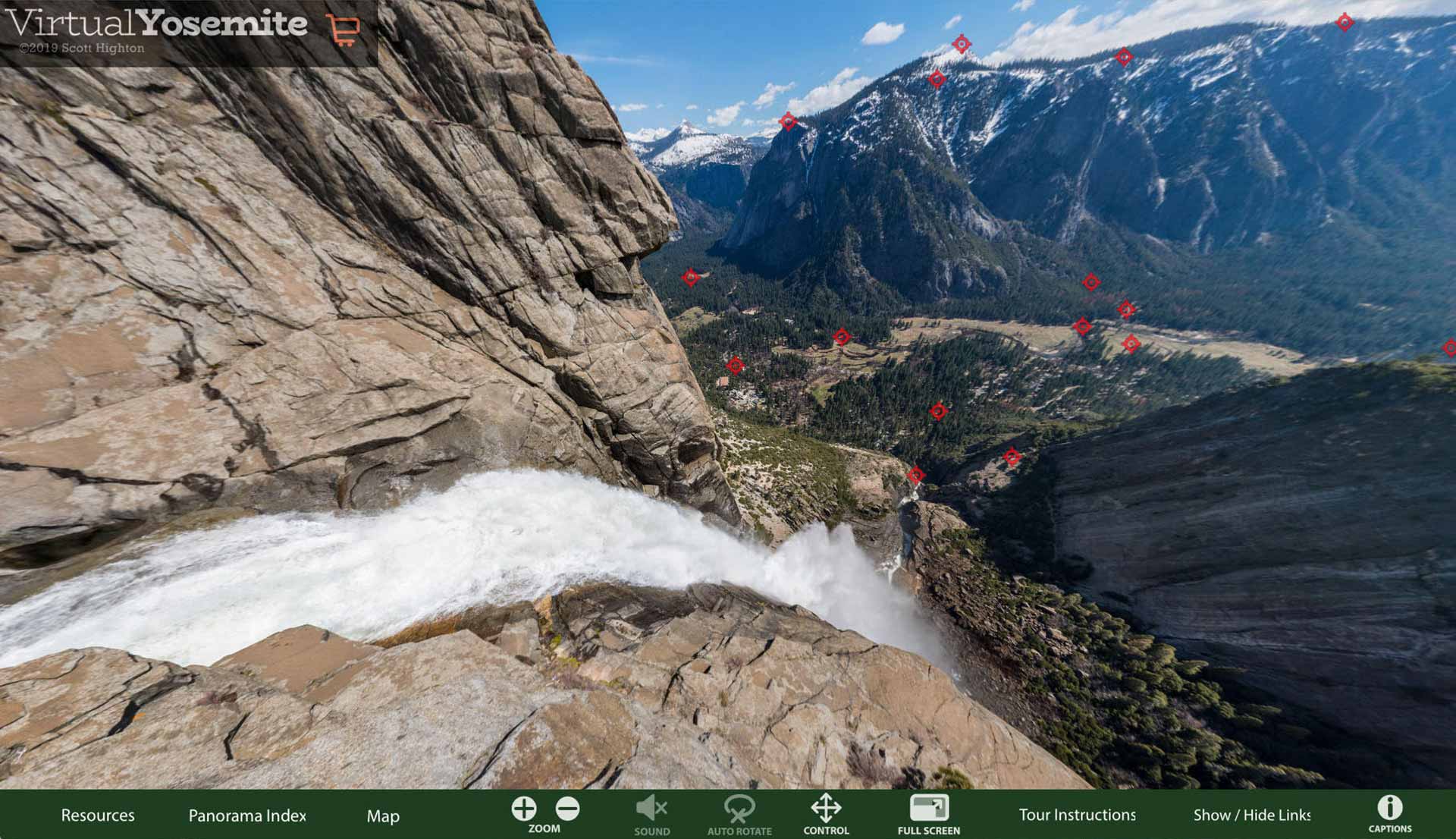- November 15, 2019
- By Dan Novak M.Jour. ’20
Click here to go to Yosemite National Park. Seriously, try it.
OK, admittedly we haven’t invented teleportation, but the collection you’ll find of immersive, 360-degree images that swoop from thundering waterfalls to majestic summits and back down to that other Yosemite National Park staple—traffic jams—is the next best thing.
There’s nothing else on the web quite like Virtual Yosemite, the creation of photographer Scott Highton ’78, with hundreds of virtual reality panoramas that allow you to look up, down, zoom in and explore California’s most famous grouping of natural landmarks.
For Highton, a professional photographer who lives a short drive from the 1,169-square-mile park, Yosemite was the perfect place to capture a breathtaking virtual reality experience, with a plethora of locations that draw the eye in every direction.
“With its dramatic cliffs, waterfalls and mountains, Yosemite certainly has lots of these,” he said. “It’s also a stunning natural location overall, with almost indescribably beautiful light for those willing to look for it.”
Highton has worked with VR technologies for 25 years, and has seen the popularity of the medium come and go. But for any new media format to truly take hold, he said, what matters more than the technology itself is meaningful content.
He spent more than two years creating the images for the Virtual Yosemite website, enlivened by audio from the scenes as well as brief text descriptions. He plans to continue to expand the site and keep it free of charge over the next decade, or more.
“Virtual Yosemite a project that is intended to both celebrate and preserve one of our most precious natural environments,” Highton said. “That provides value to everyone, whether financial or not.”
Read on to find out about some of Highton’s favorite images from the project.

An all-night “Star Party” gathers under the clear skies above Glacier Point, which overlooks Yosemite Valley at an elevation of 7,214 feet. These events are hosted every few weeks during the summer months by various astronomy groups, whose members bring their high-powered telescopes and other equipment for the public to look through and explore the night skies. In this 360-degree panoramic image, the Milky Way is clearly visible, along with light trails from commercial airliners flying high above the park. The green beams of light between ground and sky are laser pointers used by the astronomers to guide participants’ views toward certain stars and constellations. Participants are encouraged to use red-filtered flashlights to help preserve their night vision. (©2019 Photography by Scott Highton)

The majestic interior of the Grand Dining Room of Yosemite's historic Ahwahnee Hotel, home to the annual holiday Bracebridge Dinner at Yosemite. The hotel was designed in the 1920s by famed architect Gilbert Stanley Underwood and was built in only 11 months at a cost of $1.225 million (about $18 million in today’s dollars). It has been host to presidents, royalty, celebrities and countless “normal folk” from around the world. (©2016 Photography by Scott Highton)

A screen grab from the Virtual Yosemite website shows the base of 400-foot-long “cable route” to the summit of Half Dome (elevation 8,842 feet). For hikers, this is the last section of the ascent of what is ultimately a 14- to 16-mile round trip. It is a turnaround point for many, who are exhausted from the long slog to get there, the high altitude and the “pucker” factor of facing the steep climb over polished granite to the summit. The route has become so popular in recent years that the National Park Service instituted a lottery system for daily hiking permits. In order to mitigate climber "traffic jams” that used to occur at the cable section, often resulting in waits of an hour or longer, only 275 people per day are now permitted to climb Half Dome during the summer season. (©2017 Photography by Scott Highton)

The opening screen of Virtual Yosemite features a dramatic view of the sheer granite face of Half Dome from a location known as the Diving Board, made famous by Ansel Adams’ 1927 photo, “Monolith, The Face of Half Dome.” There is no official trail to this overhang, and getting there requires off-trail wilderness travel, as well as basic climbing skills. (©2013 Photography by Scott Highton)

Another Virtual Yosemite image captures the view over the precipice of Yosemite Falls into Yosemite Valley, almost 2,500 feet below. Comprising three sections, Yosemite Falls is the tallest waterfall in California, the sixth-tallest in the U.S., and the 20th-tallest in the world. There are over 800 miles of trails in Yosemite, and many of them lead to spectacular viewpoints like this one. Water flow over Yosemite Falls is usually at its peak in late spring and early summer, and generally stops completely by the end of the summer. It flows again with the arrival of rains and snow in winter. During particularly cold winters, a “beard” of ice formed by freezing spray surrounds the granite face of the waterfall. Each of the small red targets in the screen image are links to additional locations in the park that Virtual Yosemite viewers can transition to. (©2016 Photography by Scott Highton)
Topics
People